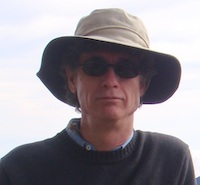
Whereas natural selection means that new species gradually evolve and existing species become extinct, we are hastening our own extinction as well as the extinction of many other species by destroying habitats and altering Earth’s climate. The massive losses that we are responsible for may well exceed all previous natural cataclysms since the asteroid destroyed the dinosaurs at the end of the Cretaceous-Paleogene.
This book is concerned with extinctions that have happened in the Holocene epoch, roughly within the last eleven thousand years. Therefore, although it would make an interesting study, I do not include dinosaurs.
Articles in the Smithsonian Magazine, by Alex Fox, and The New York Times, by Rachel Nuwer, report on a study that found that least 543 species of vertebrate land animals were lost to extinction in the last century and that about 500 more species are likely to go extinct in the next two decades. This rate of extinctions would naturally take 16,000 years and the rate is accelerating.
It is sobering to realize how much we have lost, the variety, the intricacy, and the beauty of life.
The poems in this book describe only a small percentage of extinct species. I selected a species only when I could find the photo or painting that I present along with the poem. For some animals, I wrote of extinctions in only one part of the world, such as birds of Hawaii or reptiles of Puerto Rico, even though similar extinctions have happened all over.
Most extinctions can be attributed to reckless human activities, which continue to threaten endangered and vulnerable species. In addition to fauna, we fail to spare flora; the extinction of plants would fill another volume.
Finally, an obvious semantic point. For a species to become extinct, many individual animals, even millions, meet an untimely death, and many individuals have a hand in it. This is the story of species, but we should not forget the suffering and death of individuals and that in many cases individuals such as ourselves irresponsibly contributed to it.
In any page, you can click on or touch links to jump around in this book.
You may find the following keyboard equivalents to be convenient. Here I use the symbol ⌥ for the option key on Mac/OS or the alt key on Windows, ⇧ for the shift key, and ⏎ for the return (enter) key. Arrow keys are ◄ (left), ► (right), ▲ (up), and ▼ (down).
| Context | Keys | Jump to / Behavior |
|---|---|---|
| cover | ⌥ ◄ | Books by Tom Sharp |
| ⌥ ▲ | About Tom Sharp | |
| ⌥ ► | about this book (this page) | |
| ⌥ ▼ | contents | |
| ⇧ ⌥ ▼ | contents | |
| contents | ⇧ ⌥ ▲ | cover |
| ⌥ ▼ | select the next item in the contents | |
| ⌥ ▲ | select the previous item in the contents | |
| ⌥ ► | open the selected page | |
| ⌥ ⏎ | open the selected page | |
| poem | ⇧ ⌥ ▲ | contents |
| ⌥ ◄ | contents | |
| ⌥ ▲ | select the previous chapter, or, from the top poem, open the previous page | |
| ⌥ ▼ | select the next chapter, or, from the bottom poem, open the next page |

Tom Sharp is a Native American of Aleut heritage, a member of Seldovia Village Tribe. He is the author of numerous books, including Spectacles: A Sampler of Poems and Prose, Taurean Horn Press (ISBN 0-931552-10-9), a novel, Hans and the Clock (ISBN 979-8580172484), The book of science, SciFi (ISBN 979-8694935210), Things People Do (ISBN 979-8687425568), The book of beliefs (ISBN 979-8683553593), The I Ching (ISBN 979-8573510620), Images (ISBN 979-8577560515), Aleut Artifacts (ISBN 979-8575608998), Aleut Words (ISBN 979-8582103394), and First Nations (ISBN 979-8682924769).
